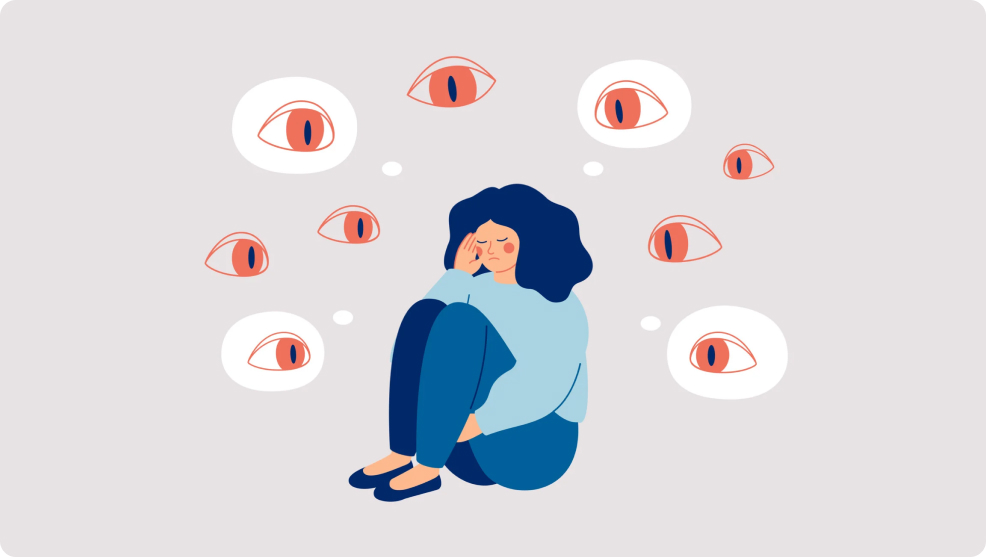Social anxiety can often feel like an invisible barrier, creating hurdles in daily interactions and leaving individuals feeling isolated. The disorder affects millions of people, but it’s often misunderstood, overlooked, or even confused with other disorders like ADHD. The good news is that there’s hope. With an understanding of social anxiety’s roots and complexities (and the help of a skilled mental health professional,) you can tackle this condition, create successful coping strategies, and confidently embrace social situations once again.

What is social anxiety?
Social anxiety, also known as social phobia, is characterized by an intense fear of being negatively evaluated, judged, or scrutinized in social situations. This fear often leads to avoidance of social events, causing significant distress and impairment in an individual’s personal, professional, and academic life. According to the National Institute of Mental Health, approximately 12.1% of U.S. adults will experience a social anxiety disorder at some point in their lives2.
What causes social anxiety disorder?
The root cause of social anxiety is not entirely understood. It may have to do with genetics, childhood experiences, or other factors.
Even if we don’t know exactly what causes social anxiety, we do know that there are variables that can make it more likely to happen. These variables are called risk factors, and knowing about them can help us figure out what’s going on and how to deal with it.
Some key risk factors for social anxiety include:
- Genetic predisposition: Research suggests that individuals with a family history of social anxiety are more likely to develop the disorder3.
- Overactive amygdala: The amygdala, a brain region responsible for processing emotions, is often overactive in people with social anxiety4. This can lead to heightened fear and anxiety in social situations.
- Environmental factors: Childhood experiences, such as bullying, family conflict, or a history of abuse, can contribute to the development of social anxiety5.
- Learned behavior: Social anxiety can be a learned response from observing the anxious behavior of others or experiencing negative social situations4.
The Impact of Social Anxiety on Different Groups
Social anxiety can affect individuals at any age, but its impact may differ depending on the age group:
- Children: In children, social anxiety may present as extreme shyness, fear of being humiliated or embarrassed, difficulty making friends, and avoidance of social situations like birthday parties or school events. Early intervention is important to avoid life-long impacts and improve the child’s social connectedness.
- Adolescents: Social anxiety can be particularly challenging during adolescence, a critical period for developing social skills and self-identity. It may lead to poor academic performance, substance abuse, or depression6.
- Adults: In adults, social anxiety can interfere with personal relationships, hinder professional growth, and lead to social isolation, depression, or substance abuse.
Social Anxiety vs. ADHD
Although both social anxiety and ADHD (Attention Deficit Hyperactivity Disorder) can impact an individual’s social interactions, they are distinct conditions with different causes and symptoms. ADHD is characterized by persistent inattention, impulsivity, and hyperactivity, making it difficult for individuals to focus, complete tasks, and follow social cues8.
The differences between social anxiety and ADHD include:
- In social anxiety, fear of negative evaluation is the primary issue, whereas ADHD is characterized by inattention, impulsivity, and hyperactivity.
- Social anxiety may lead to avoiding social situations, while ADHD may cause difficulty in understanding and responding to social cues.
- Social anxiety often results in overthinking and self-consciousness, while ADHD is related to forgetfulness, disorganization, and impulsive decision-making.
It’s easy to confuse social anxiety and ADHD because both conditions can lead to difficulty interacting with others. The two conditions are, however, distinct and have different causes and symptoms- as well as different treatments. Recognizing their differences can help you make sure you’re receiving the right help for the right struggle.

Treatment Options for Social Anxiety
Effective treatment for social anxiety is available, and seeking help from a qualified mental health professional is a critical step toward healing. Cognitive-behavioral therapy (CBT), exposure therapy, and medication are among the most common treatments for social anxiety. CBT focuses on changing negative thought patterns and behaviors related to social anxiety, while exposure therapy involves gradually confronting feared social situations. Medications such as antidepressants and beta-blockers can also help manage social anxiety symptoms. With the right treatment and support, individuals with social anxiety can overcome their fears and live fulfilling life.
Understanding social anxiety is just the first step to addressing it. At WellPsyche, we believe in providing comprehensive and accurate information to empower you on your mental health journey. If you or a loved one is struggling with social anxiety or any other mental health concern, reach out to us. We’ll help you get connected with a caring and committed expert clinician who can help you find your way back to health.
Living with anxiety is like being followed by a voice. It knows all your insecurities and uses them against you. It gets to the point when it’s the loudest voice in the room-it’s the only one you can hear.
— Unknown



